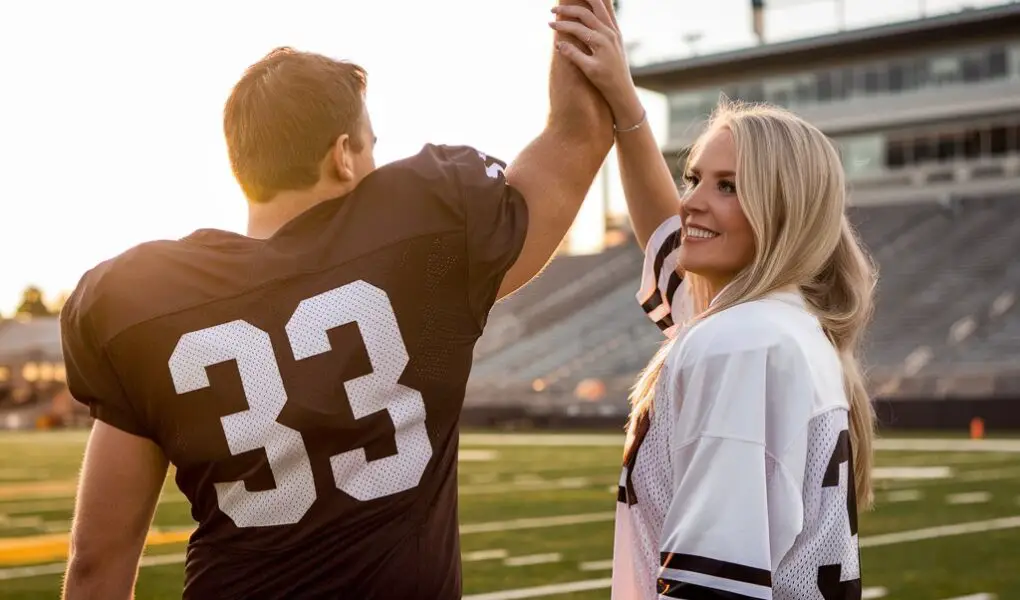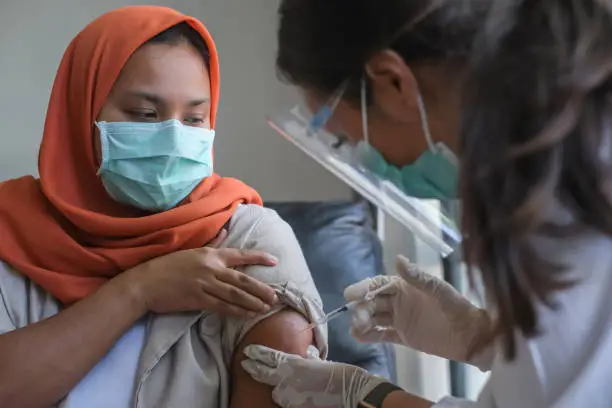Imagine this: Your community’s dream of a new basketball court or a youth sports program is within reach—but first, you need to win the hearts (and wallets) of funders. Coming up with some perfect sports proposal ideas can be the game-changer you need to turn dreams into reality.
Let’s dive into some actionable sports proposal ideas that are simple, effective, and easy to execute.
1. Youth Sports Development Programs
Why It Works:
Youth sports programs are proven to promote health, teamwork, and discipline. They are especially appealing to funders focused on education, community health, and youth development. These programs not only keep children active but also instill essential life skills that contribute to their overall growth and future success.
Proposal Idea:
Create a program targeting underserved youth in your area. Highlight how the program will provide access to structured activities, mentorship, and life skills. Incorporate compelling data to strengthen your proposal:
- “70% of kids stop playing sports by age 13 due to lack of access.” (Source: Aspen Institute)
- “Participation in youth sports increases high school graduation rates by 15%.” (Source: National Federation of State High School Associations)
- “Regular physical activity reduces obesity rates by 20% among children.” (Source: Centers for Disease Control and Prevention)
Key Elements to Include:
- Program Structure: Outline weekly practices, monthly mentorship meetings, and quarterly tournaments.
- Budget: Break down costs for equipment, coaches, transportation, and facility rentals.
- Measurable Outcomes: Define the number of participants, attendance rates, skill improvement metrics, and academic performance indicators.
- Funding Request: Be specific—e.g., $10,000 to cover equipment and coaching staff.
- Community Impact: Describe how the program will foster a sense of community and reduce youth delinquency.
Success Story:
Consider the Boys & Girls Clubs of America, which reported a 25% increase in academic performance among participants who engaged in their sports programs. Sharing such success stories can make your proposal more relatable and convincing.
/>
2. Community Sports Facility Renovation
Why It Works:
Every community thrives when there’s a place to gather. Updating or building sports facilities increases access to recreation while fostering community pride and social cohesion. Modern facilities can serve multiple sports and activities, maximizing their usage and benefits.
Proposal Idea:
Pitch the renovation of an old soccer field into a multi-sport complex with basketball courts, running tracks, and a seating area for spectators. Emphasize the facility’s potential to host local leagues, tournaments, and community events.
Key Data to Use:
- “Access to safe play areas reduces crime rates by 28% in neighborhoods.” (National Recreation and Park Association)
- “Communities with renovated sports facilities see a 15% increase in local business revenue.” (Urban Institute)
- Facility Usage Statistics: Detail how many people will benefit, e.g., “1,200 residents will gain access to the space.”
What to Include:
- Visuals: Add pictures of the current facility and conceptual designs for the renovation. Include architectural plans or artist renditions.
- Budget: Provide an itemized estimate—equipment, construction, maintenance costs, and potential revenue streams (e.g., rental fees).
- Community Engagement: Highlight how local volunteers and residents will be involved in the project, from planning to execution.
- Sustainability Plan: Discuss long-term maintenance and potential for future expansions.
Success Story:
The Ponce City Market Sports Complex in Atlanta transformed a dilapidated area into a thriving community hub, increasing local engagement and boosting the surrounding economy by 30%.
3. Women in Sports Empowerment Initiative
Why It Works:
With the growing emphasis on gender equality, proposals targeting women’s sports have a high chance of gaining support. Funders love initiatives that break barriers and empower women, promoting inclusivity and diversity in athletics.
Proposal Idea:
Launch a program to encourage young girls to participate in sports like basketball, soccer, or track and field, paired with leadership training and mentorship. Emphasize the dual benefits of physical activity and personal development.
Key Data:
- “Girls who play sports are 92% less likely to get involved in drugs.” (Women’s Sports Foundation)
- “Female athletes are 40% more likely to attend college than non-athletes.” (NCAA)
- “Participation in sports increases self-esteem by 25% among teenage girls.” (Psychology Today)
How to Pitch:
- Narrative: Share a compelling story of a girl who overcame challenges through sports. Personal anecdotes can create an emotional connection with funders.
- Resources Needed: Detail the requirements—training kits, coaching fees, outreach events, and mentorship programs.
- Partnerships: Collaborate with schools, community groups, and local businesses to enhance program reach and sustainability.
Key Elements to Include:
- Program Structure: Weekly sports training sessions, monthly leadership workshops, and quarterly mentorship meetings.
- Budget: Costs for equipment, coaching salaries, venue rentals, and marketing.
- Measurable Outcomes: Number of participants, retention rates, leadership roles taken by participants, and academic achievements.
Success Story:
The Girls on the Run program has positively impacted over 250,000 girls, fostering leadership and promoting physical fitness through a structured running curriculum.
4. Adaptive Sports for Individuals with Disabilities
Why It Works:
Adaptive sports are transformative, offering inclusion and opportunity for individuals with disabilities. Many funders prioritize inclusivity, diversity, and mental health, making adaptive sports a compelling proposal focus.
Proposal Idea:
Develop an adaptive sports league for wheelchair basketball, sitting volleyball, or track racing. Highlight its impact on mental health, physical rehabilitation, and community integration.
Supporting Data:
- “Sports reduce depression symptoms in people with disabilities by 47%.” (Journal of Rehabilitation Research)
- “Participation in adaptive sports increases social inclusion by 30%.” (Disability and Rehabilitation Journal)
- “Adaptive sports programs improve physical health by 25% among participants.” (American Journal of Sports Medicine)
Include:
- Detailed Plan: Number of participants, types of sports offered, schedules, and locations.
- Funding Breakdown: Adaptive equipment costs, specialized coaching, transportation, and event management.
- Long-term Goals: Expanding the program to other regions or introducing additional sports.
Success Story:
The Special Olympics has empowered over 5 million athletes worldwide, demonstrating the profound impact of adaptive sports on individuals with disabilities.
5. Sports and STEM Integration Program
Why It Works:
This innovative approach links athletics with science, technology, engineering, and math (STEM). Funders interested in education and future-ready skills are likely to be intrigued by programs that prepare youth for the demands of the modern workforce while keeping them physically active.
Proposal Idea:
Combine sports training with STEM workshops—e.g., teaching kids to analyze game statistics, design sports equipment, or explore the physics of movement. This dual focus can engage students who might excel in both areas.
Data to Include:
- “STEM jobs are projected to grow 8% by 2030.” (U.S. Bureau of Labor Statistics)
- “Only 16% of high school students are proficient in math and interested in STEM careers.” (National Science Foundation)
- “Integrating physical activity with learning improves cognitive function by 20%.” (Journal of Educational Psychology)
Proposal Outline:
- Program Structure: Sports practices paired with weekly STEM labs. For example, use basketball to teach geometry through shot angles or soccer to understand biomechanics.
- Budget: Costs for STEM kits, sports gear, facilitator salaries, and technology integration.
- Outcomes: Improved STEM engagement, enhanced physical fitness, and higher academic performance in both areas.
Success Story:
Programs like STEMletics have successfully merged sports with STEM education, resulting in increased student interest in both fields and improved academic outcomes.
6. Esports and Digital Sports League
Why It Works:
Esports are booming, especially among younger audiences. Introducing esports as a community initiative aligns with modern trends and appeals to tech-savvy youth. It also opens up opportunities for scholarships and career paths in the gaming industry.
Proposal Idea:
Create an esports league for local youth, providing coaching and competitions while teaching gaming etiquette, teamwork, and career paths in the gaming industry. This can include organizing tournaments, streaming events, and offering workshops on game design and development.
Data to Use:
- “Esports revenue surpassed $1 billion globally in 2021.” (Newzoo)
- “There are over 2.7 billion gamers worldwide, with a significant portion under 18.” (Statista)
- “Participation in esports can improve cognitive skills such as strategic thinking and hand-eye coordination by 30%.” (Games and Learning Journal)
How to Structure:
- Timeline: Weekly training sessions, monthly tournaments, and annual championships.
- Technology Needs: Gaming consoles, high-performance PCs, monitors, reliable internet access, and streaming equipment.
- Outreach: Include workshops on responsible gaming, digital citizenship, and potential career paths in the gaming industry.
Key Elements to Include:
- Program Structure: Detailed schedule of gaming sessions, training modules, and competition timelines.
- Budget: Costs for technology, coaching staff, venue rentals, and marketing.
- Measurable Outcomes: Number of participants, tournament participation rates, skill improvement metrics, and academic performance correlations.
Success Story:
DreamHack events have created global communities around esports, showcasing the potential for local leagues to expand and attract significant engagement and sponsorship.
7. Sports Mental Health Initiative
Why It Works:
The link between sports and mental health is well-documented. Funders who prioritize well-being, mental health awareness, and holistic health are ideal targets for proposals that address the psychological aspects of athletic participation.
Proposal Idea:
Launch a mental health program for athletes, focusing on mindfulness, stress management, and access to counseling services. Incorporate activities such as meditation sessions, workshops on handling competitive pressure, and one-on-one counseling.
Supporting Data:
- “Athletes report 45% lower rates of anxiety with regular mindfulness training.” (American Psychological Association)
- “Regular physical activity can reduce symptoms of depression by 30%.” (Mayo Clinic)
- “80% of athletes experience some form of mental health issue during their careers.” (Sports Psychology Journal)
Must-Have Details:
- Services Offered: Meditation classes, therapy sessions, wellness workshops, and peer support groups.
- Budget Plan: Hiring mental health professionals, materials for workshops, venue rentals, and marketing.
- Metrics: Reduction in stress levels, increased participation in mental health sessions, and improved overall athlete performance and well-being.
Success Story:
The Athlete Ally initiative has successfully integrated mental health support into athletic programs, resulting in a 35% increase in athletes seeking counseling and support services.
8. Sports Equipment Recycling Program
Why It Works:
Sustainability is a growing concern, and a program that collects and refurbishes old sports equipment can attract eco-conscious funders. It also addresses issues of resource scarcity and community support by providing equipment to those in need.
Proposal Idea:
Organize donation drives to collect used sports gear, which can be refurbished and redistributed to low-income schools or youth centers. This not only promotes environmental sustainability but also ensures that more children have access to necessary equipment.
Supporting Data:
- “15 million tons of sports equipment end up in landfills annually.” (Environmental Protection Agency)
- “Recycling sports equipment can save communities up to $500,000 annually in waste management costs.” (Green Alliance)
- “Refurbished equipment can extend its life by 5 years, reducing environmental impact.” (Sustainable Sports Initiative)
Details to Include:
- Logistics: Collection points, refurbishment centers, and delivery plans.
- Funding Request: Transportation, cleaning, refurbishment costs, and storage.
- Community Involvement: Encourage local businesses, schools, and volunteers to participate in collection drives and refurbishment efforts.
- Environmental Impact: Detail how the program reduces waste and promotes sustainability within the community.
Success Story:
The Recycle Sports program in Chicago successfully diverted over 200 tons of sports equipment from landfills, providing essential gear to over 500 youth organizations.
9. Sports and Nutrition Education Initiative
Why It Works:
Nutrition is a critical component of athletic performance. A program that combines sports training with nutrition education can attract health-focused funders and promote overall well-being among participants.
Proposal Idea:
Introduce workshops that teach young athletes about balanced diets, hydration, and recovery foods. Incorporate hands-on activities such as cooking classes, meal planning sessions, and nutrition seminars led by experts.
Supporting Data:
- “Youth athletes with proper nutrition perform 15% better in games.” (National Athletic Trainers’ Association)
- “Proper hydration can improve athletic performance by up to 10%.” (Gatorade Sports Science Institute)
- “Nutrition education increases long-term healthy eating habits by 25%.” (Harvard School of Public Health)
Must-Have Sections:
- Outline: Weekly training sessions followed by nutrition classes. For example, after a soccer practice, conduct a workshop on the benefits of carbohydrates and proteins.
- Budget: Costs for nutritionists, training sessions, materials, and kitchen facilities for cooking classes.
- Measurable Outcomes: Improved performance metrics, knowledge retention through pre and post-program surveys, and healthier eating habits among participants.
Success Story:
The Fuel Up to Play 60 initiative by the National Dairy Council has successfully educated thousands of young athletes on the importance of nutrition, leading to improved athletic performance and healthier lifestyles.
10. Inclusive Sports Programs for Senior Citizens
Why It Works:
As populations age, there is a growing need for inclusive sports programs tailored to senior citizens. These programs promote physical health, social interaction, and mental well-being, appealing to funders interested in elderly care and community health.
Proposal Idea:
Develop a sports program specifically designed for senior citizens, including low-impact activities like tai chi, swimming, walking clubs, and modified team sports. Emphasize the benefits of regular physical activity for aging populations.
Supporting Data:
- “Regular physical activity reduces the risk of chronic diseases by 30% in seniors.” (World Health Organization)
- “Engagement in community sports programs decreases feelings of loneliness by 40% among elderly participants.” (Journal of Aging and Physical Activity)
- “Physical activity improves cognitive function in seniors by 25%.” (Alzheimer’s Association)
Key Elements to Include:
- Program Structure: Weekly classes, social events, and seasonal sports activities.
- Budget: Costs for instructors, facilities, equipment, and transportation.
- Accessibility: Ensure facilities are senior-friendly with necessary accommodations.
- Health Benefits: Detail the physical and mental health improvements participants can expect.
- Community Impact: Foster intergenerational connections and enhance the quality of life for senior citizens.
Success Story:
The Silver Sneakers program offers fitness memberships to seniors, leading to increased physical activity and enhanced social connections among participants.
11. Sports Scholarships and Academic Support Programs
Why It Works:
Combining sports scholarships with academic support can attract funders interested in education and youth empowerment. This dual approach ensures that athletes excel both on the field and in the classroom, promoting well-rounded development.
Proposal Idea:
Establish a scholarship program that provides financial assistance to talented student-athletes while offering academic tutoring, mentoring, and college preparation resources. Highlight the importance of balancing athletic pursuits with academic achievements.
Supporting Data:
- “Student-athletes with scholarships are 20% more likely to graduate from college.” (NCAA)
- “Academic support programs improve GPA by 15% among student-athletes.” (Journal of College Student Development)
- “Scholarships increase access to higher education for underprivileged youth by 30%.” (Education Trust)
Key Elements to Include:
- Program Structure: Eligibility criteria, application process, and selection committee details.
- Budget: Scholarship amounts, administrative costs, and funding for academic support services.
- Partnerships: Collaborate with local schools, colleges, and academic institutions to provide tutoring and mentoring.
- Outcomes: Track graduation rates, academic performance, and post-graduation success of scholarship recipients.
Success Story:
The Jack Kent Cooke Foundation provides scholarships and academic support to high-achieving students with financial need, resulting in higher college completion rates and career success.
12. Sports Injury Prevention and Rehabilitation Programs
Why It Works:
Addressing sports injuries through prevention and rehabilitation can attract funders focused on healthcare, physical therapy, and community well-being. These programs ensure that athletes remain healthy and can continue their sports participation safely.
Proposal Idea:
Implement a program that offers injury prevention workshops, access to physical therapists, and rehabilitation services for injured athletes. Emphasize the long-term benefits of reducing injury rates and promoting safe sports practices.
Supporting Data:
- “Effective injury prevention programs can reduce sports-related injuries by up to 50%.” (American Journal of Sports Medicine)
- “Rehabilitation programs decrease recovery time by 30% for injured athletes.” (Physical Therapy Journal)
- “Proper injury management leads to a 25% decrease in chronic pain among athletes.” (Journal of Orthopaedic & Sports Physical Therapy)
Key Elements to Include:
- Program Structure: Regular workshops, access to physical therapy sessions, and individualized rehabilitation plans.
- Budget: Costs for hiring physical therapists, purchasing equipment, and running workshops.
- Educational Materials: Provide resources on proper warm-ups, stretching techniques, and injury prevention strategies.
- Measurable Outcomes: Track injury rates, recovery times, and overall athlete health improvements.
Success Story:
The Prevent Injury and Enhance Performance (PEP) program has successfully reduced ACL injuries in youth soccer players by 50%, showcasing the effectiveness of targeted injury prevention strategies.
13. Multicultural Sports Programs
Why It Works:
Multicultural sports programs promote diversity, inclusion, and cultural exchange. These programs can bridge gaps between different communities, fostering mutual respect and understanding through shared athletic activities.
Proposal Idea:
Develop a sports program that celebrates diverse cultures by incorporating traditional games, celebrating international sports days, and promoting multicultural teamwork. Highlight the program’s role in enhancing social cohesion and cultural appreciation.
Supporting Data:
- “Participation in multicultural programs increases cultural awareness by 40%.” (Cultural Diversity Journal)
- “Sports can reduce cultural biases and promote inclusivity by 25%.” (International Journal of Sports Science & Coaching)
- “Multicultural programs enhance social skills and empathy among participants.” (Journal of Applied Social Psychology)
Key Elements to Include:
- Program Structure: Include a variety of sports from different cultures, host cultural exchange events, and integrate language learning.
- Budget: Costs for equipment, facilitators, cultural materials, and event hosting.
- Community Involvement: Partner with cultural organizations, schools, and local communities to ensure authentic representation.
- Outcomes: Increased cultural awareness, improved social skills, and enhanced community relationships.
Success Story:
The World Sport Program in Toronto successfully brought together youth from over 30 different cultural backgrounds, fostering unity and mutual respect through diverse athletic activities.
14. Sports Technology Integration Programs
Why It Works:
Integrating technology into sports programs can enhance training, performance analysis, and fan engagement. Funders interested in innovation, technology, and education are likely to support initiatives that modernize sports practices.
Proposal Idea:
Introduce technology-driven training tools such as wearable devices, performance analytics software, and virtual reality (VR) training modules. Emphasize how these technologies can improve athlete performance and provide data-driven insights.
Supporting Data:
- “Wearable technology can improve athlete performance by 15% through real-time data tracking.” (Sports Technology Journal)
- “Performance analytics lead to a 20% increase in training efficiency.” (Journal of Sports Sciences)
- “Virtual reality training reduces injury rates by 10% by enhancing situational awareness.” (Virtual Reality in Sports Research)
Key Elements to Include:
- Program Structure: Incorporate technology into regular training sessions, provide training on data analysis, and utilize VR for scenario-based training.
- Budget: Costs for purchasing wearable devices, software licenses, VR equipment, and training facilitators.
- Educational Components: Teach athletes and coaches how to interpret data and use technology effectively.
- Measurable Outcomes: Improved performance metrics, reduced injury rates, and enhanced training efficiency.
Success Story:
Team USA’s use of wearable technology during the 2020 Olympics led to significant performance improvements and injury prevention, showcasing the potential of technology integration in sports.
15. Environmental Sustainability in Sports Programs
Why It Works:
Promoting environmental sustainability within sports programs can attract funders passionate about green initiatives, sustainability, and community health. Sustainable practices can reduce the environmental footprint of sports activities and promote eco-friendly habits among participants.
Proposal Idea:
Implement environmentally sustainable practices in your sports programs, such as using recycled materials for equipment, promoting eco-friendly transportation to events, and organizing green sports events like tree-planting during tournaments.
Supporting Data:
- “Sustainable sports practices can reduce carbon emissions by 25%.” (Green Sports Alliance)
- “Eco-friendly programs increase community engagement by 20%.” (Environmental Research Letters)
- “Recycling sports equipment saves up to 500 pounds of waste annually per program.” (Waste Management Journal)
Key Elements to Include:
- Program Structure: Outline sustainable practices, including recycling initiatives, energy-efficient facilities, and eco-friendly transportation options.
- Budget: Costs for sustainable materials, recycling programs, and green event planning.
- Educational Components: Teach participants about environmental stewardship and the importance of sustainability in sports.
- Measurable Outcomes: Track waste reduction, carbon emission decreases, and increased community participation in sustainability efforts.
Success Story:
The Eco-League initiative in California has successfully integrated sustainability into local sports leagues, resulting in a 30% reduction in waste and increased awareness of environmental issues among participants.
Additional Resources and Support
a) Expand Your Knowledge
The grant writing field is always evolving. Keep learning and improving your skills to stay competitive.
Recommended Resources:
- Request for Proposal Success: How to Write Proposals That Win: Learn the techniques and strategies to create standout proposals.
- Tech Startup Funding Secrets: Navigating Grants for Maximum Growth: Perfect for those in the tech sector looking to leverage grants for scaling.
- Grant Proposal Guide for Environmental Projects: Tailored for environmental initiatives seeking to secure impactful funding.
- The Ultimate Guide to Federal Grant Applications: Techniques for Success: Master the complexities of federal grants with actionable insights.
b) Invest in Expert Guidance
Want to fast-track your growth and achieve even more success?
Join one of our mentorship programs for tailored advice and support:
Mentorship Programs:
- 3-Month Mentorship: The Foundation Builder: A short-term plan to refine your grant writing skills and win your first (or next) grant.
- 6-Month Mentorship: The Proposal Pro: Dive deeper into strategies, proposal reviews, and funding plans.
- 1-Year Mentorship: The Funding Champion: Build long-term success with comprehensive guidance, unlimited reviews, and exclusive resources.
c) Book a One-on-One Consultation
Sometimes you just need personalized advice to tackle challenges or fine-tune your strategy. Let’s work together to solve your unique grant writing challenges.
Book a Consultation Call Here
Call to Action
Crafting a compelling sports proposal isn’t rocket science; it’s about understanding your audience and presenting a clear vision. Each of these ideas can be tailored to fit your community’s needs and the interests of potential funders.
Whether you’re aiming to develop youth sports programs, renovate facilities, empower women in sports, or integrate technology and sustainability, the key is to present a well-researched, data-backed proposal that highlights the positive impact of your initiative.
Ready to take your proposal game to the next level?
Subscribe to the Grant Writing Academy Newsletter for expert tips, templates, and strategies to enhance your grant success rate.
Access exclusive resources designed to make your funding goals a reality.
Sources and References:
- Aspen Institute: The State of Play
- National Recreation and Park Association: The Benefits of Recreation
- Women’s Sports Foundation: Empowering Girls
- Journal of Rehabilitation Research: Sports and Mental Health
- National Athletic Trainers’ Association: Youth Nutrition
- Newzoo: Global Esports Report
- U.S. Bureau of Labor Statistics: STEM Occupations
- National Science Foundation: STEM Statistics
- Environmental Protection Agency: Sports Equipment Waste
- Harvard School of Public Health: Nutrition and Youth
- American Journal of Sports Medicine: Injury Prevention
- Green Sports Alliance: Sustainability in Sports
- Waste Management Journal: Sports Equipment Recycling
- Games and Learning Journal: Cognitive Benefits of Gaming
Feel free to adapt these ideas and watch your funding dreams turn into tangible wins for your community!






